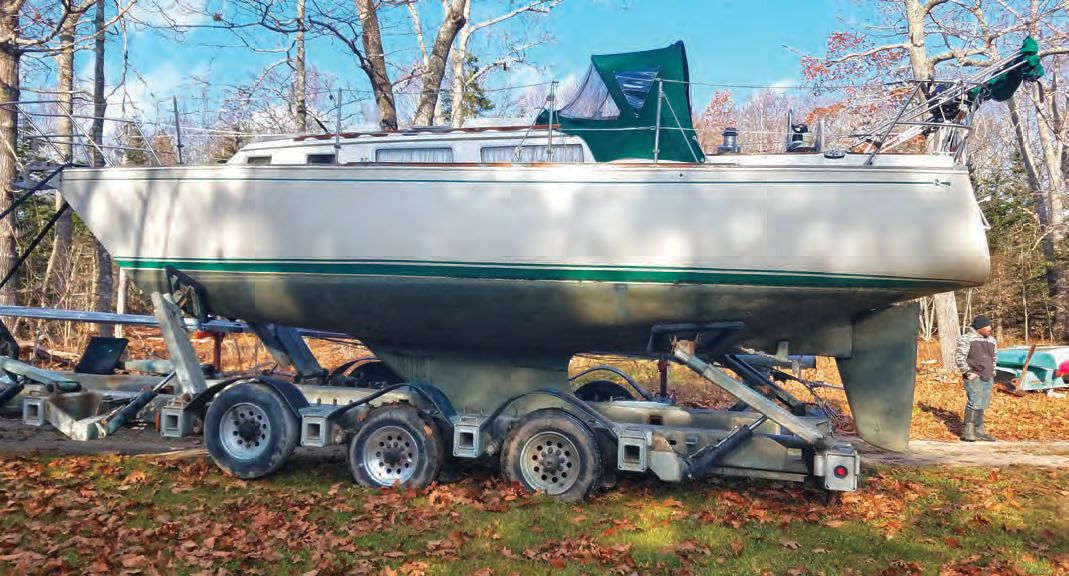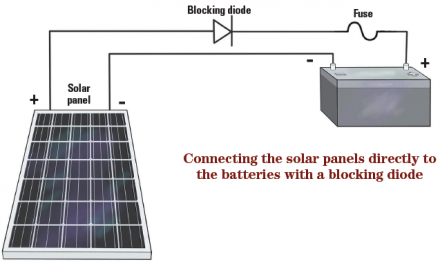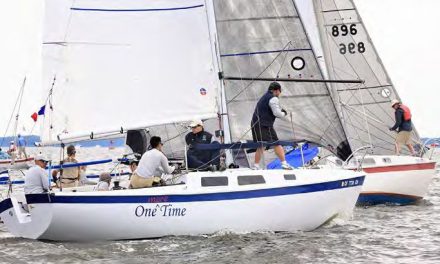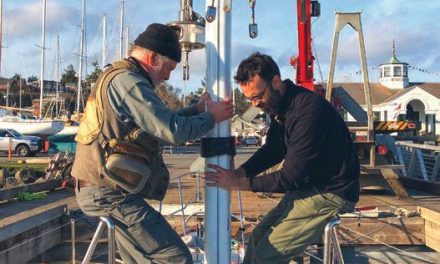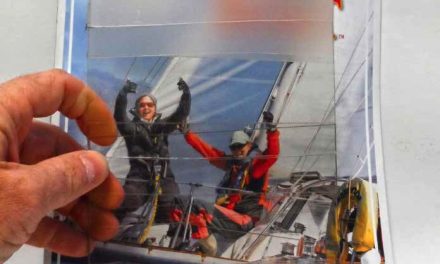Rebedding a cabin top eyebrow to solve a pesky leak
Issue 154: Jan/Feb 2024
Winter covers come off boats late up here in Maine, leaving a short, often cold window to get ready for launch. Last year, before embarking on the usual list of spring chores for Ora Kali, we needed to rebed her starboard eyebrow. After two seasons of sailing, we finally tracked down a pesky cabin leak to this narrow strip of teak along the side of the coach roof. Over our Sabre 30’s 40 years of life, it had loosened and lost all of the bedding compound under the wood and in the screw holes.
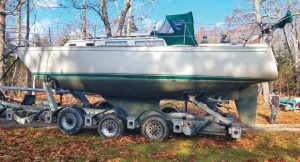
Ora Kali in her winter quarters, showing the eyebrow on her coach roof.
When we bought Ora Kali in New Jersey, the owner implied she had leaks, but there were no obvious signs for the first half of our trip delivering her up the coast to Maine. We were distracted by the fact that soot spilled out of Ora Kali’s engine anytime we ran it at high revs. With the insides of lockers getting black, and me obsessed with cleaning off soot from various surfaces in the galley, an occasional leak would have seemed like peanuts.
It wasn’t until a month into the trip, with the engine finally awaiting repair in Rhode Island amid days of rain, that the leaks took center stage. Ora Kali has a fiberglass headliner in the cabin that comes down the sides of the coach roof and extends out under the side decks, ending in a molded chase to run wires fore and aft. A row of holes cut in the liner provides access to nuts on the bolts that hold inner genoa tracks to the sidedecks. After rain, the water would leak — sometimes pour — out of a couple of holes, sometimes out of the wire chasing, sometimes over the galley, often in a side locker or over a settee cushion.
But the presence of the liner made tracking down the leak’s source difficult. I tried covering various points where the rain might be making its way in. I reset chainplate covers. I resealed around the portlights on that side; it made no difference. Finally, in Maine, we pulled up and discarded the inner genoa tracks. Nothing worked entirely.
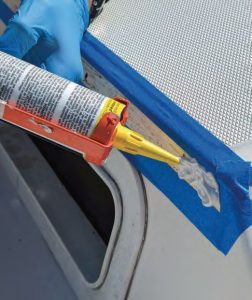

Then in the fall, after the boat had been hauled out, I happened to wiggle the starboard eyebrow piece and noticed it was a bit loose on the coach roof, and I could widen the gap by pulling on it. I got a hose, strategically poured water along the eyebrow, and was able to recreate the leak.
Sabre owners have a lively online presence, and while waiting for spring, we found information there from others who went through the rebedding process. One of the first things mentioned was the difficulty of removing the eyebrow without breaking it, as the thin strip of teak is very difficult to replace. We chose a week with a dry weather forecast, untied and removed Ora Kali’s big tarp, and got to work, prepared to treat the eyebrow gingerly. But Ora Kali’s wood is in remarkable shape, and with nothing left of the original sealant, once the plugs were drilled out and the screws removed, it fell away easily, and we carried it over to our basement rather than let it lay out to get stepped on.
From there, it was a process of cleaning the fiberglass where layers of grime and varnish had seeped under the wood and been caked on. I was able to remove most of it with a wet terry cloth rag, but getting a good surface for the sealant to adhere to meant gentle scraping with a wood scraper.
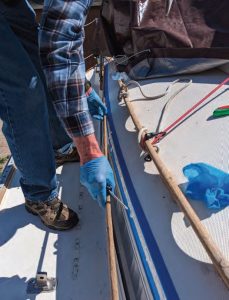

Other than a couple of spots where someone had tried to inject silicone into a hole without removing the wood, all trace of the original sealant was gone. Sabre employed butyl tape to seal deck fittings, and I had followed this tradition when rebedding chainplate covers, but butyl wouldn’t do for wood. When restoring our Peterson 44, Oddly Enough, Tom and I got to like Life-Calk. This is a polysulfide product, so it doesn’t hold up in sunlight, but otherwise it stays flexible, doesn’t deform, and is easier to remove than products made with marine silicone.
After carefully taping the fiberglass around the space where the eyebrow sits, Tom applied the Life-Calk with a caulking gun. We had saved the screws and started them in their holes in the wood to help reset the awkwardly long piece of teak, managing to do this without smearing the sealant and with a minimum of fussing at each other.
Once it had cured but was still soft, a day or two later, we removed the tape and I cut away the excess sealant. This is a vulnerable joint because the eyebrow is meant to divert water draining off the coach roof away from the ports underneath, which means it needs to provide a watertight channel. To make sure it was secure, Tom retaped and applied a thin bead to the upper seam, then smoothed it before removing the tape.
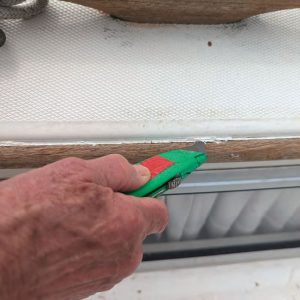
Tidying up the sealant in the final joint before sealing the wood with Semco Teak Sealer.
Tom used a plug cutter to make new plugs, and glued them in with indoor/outdoor wood glue. With the eyebrow rebedded, my final task was to brush on the season’s coat of Semco Teak Sealer when I resealed the rest of the wood.
Ann Hoffner has been a sailor since she was 9 years old. For the last 20 years, she’s written about her adventures for a variety of sailing magazines. Along with her husband, Tom Bailey, a photographer, she downsized from their offshore passagemaking P-44, Oddly Enough, to Ora Kali, a nimble, shoal-draft Sabre 30 that is teaching them the joys of Maine coastal cruising.
Thank you to Sailrite Enterprises, Inc., for providing free access to back issues of Good Old Boat through intellectual property rights. Sailrite.com

